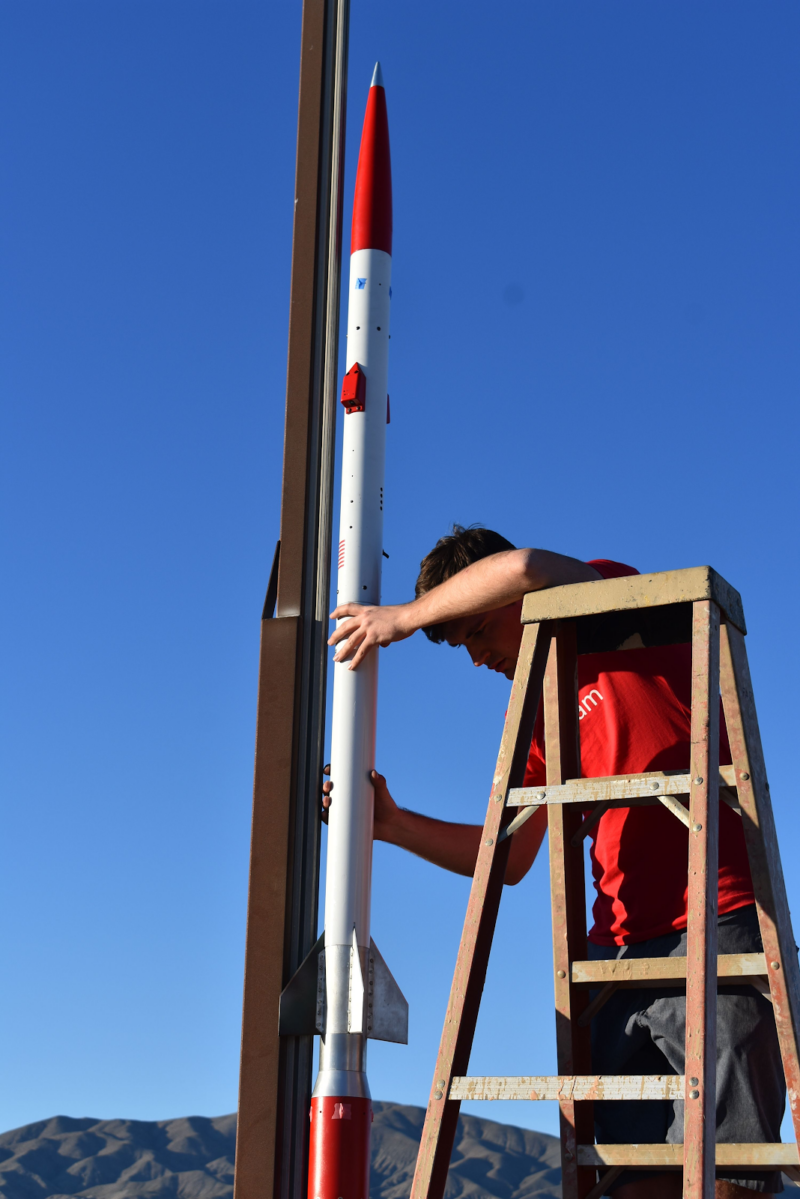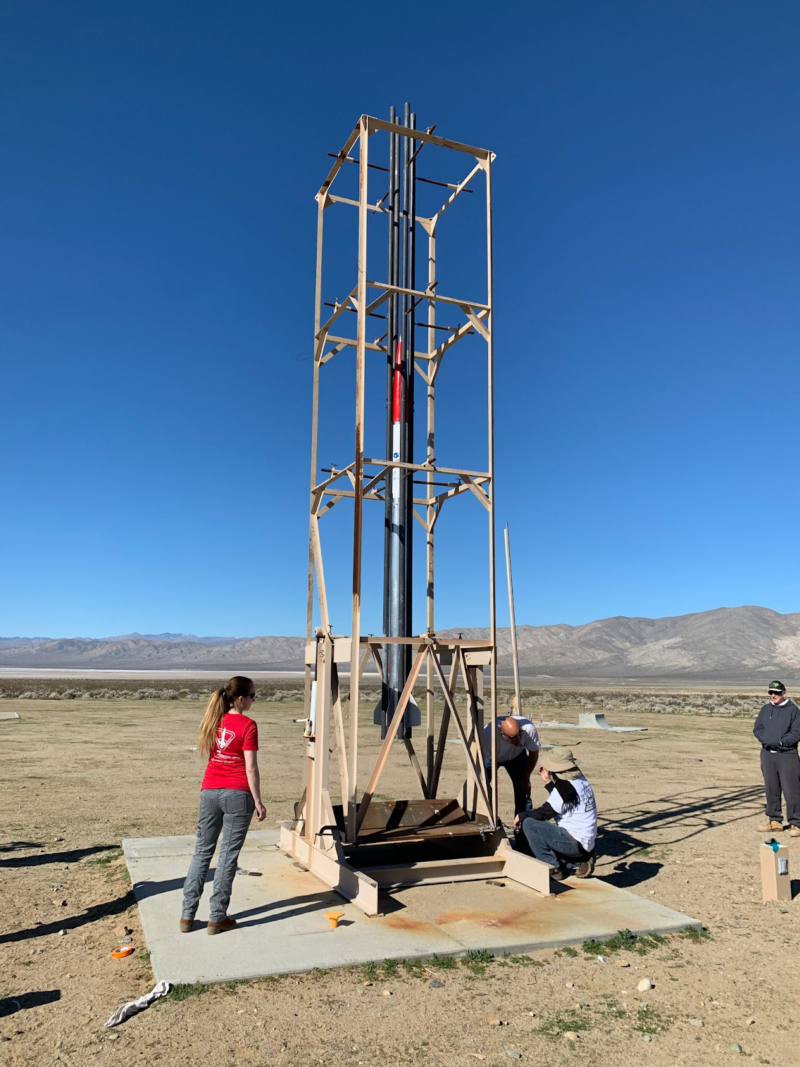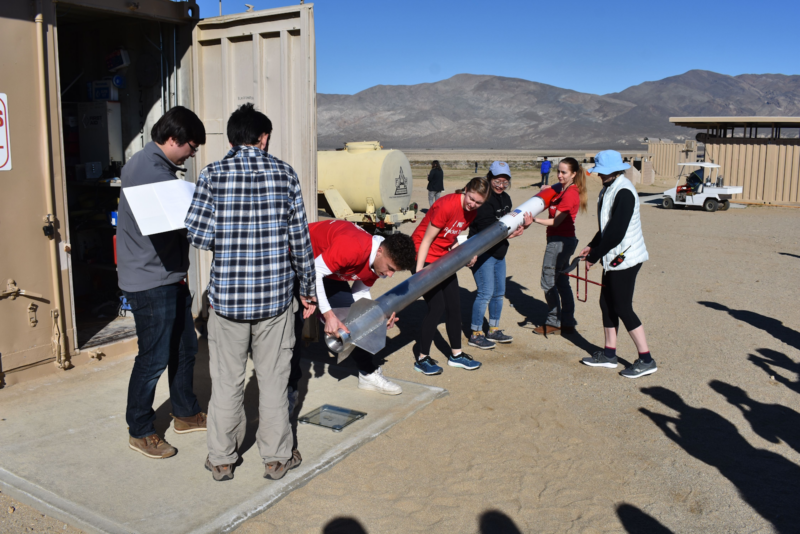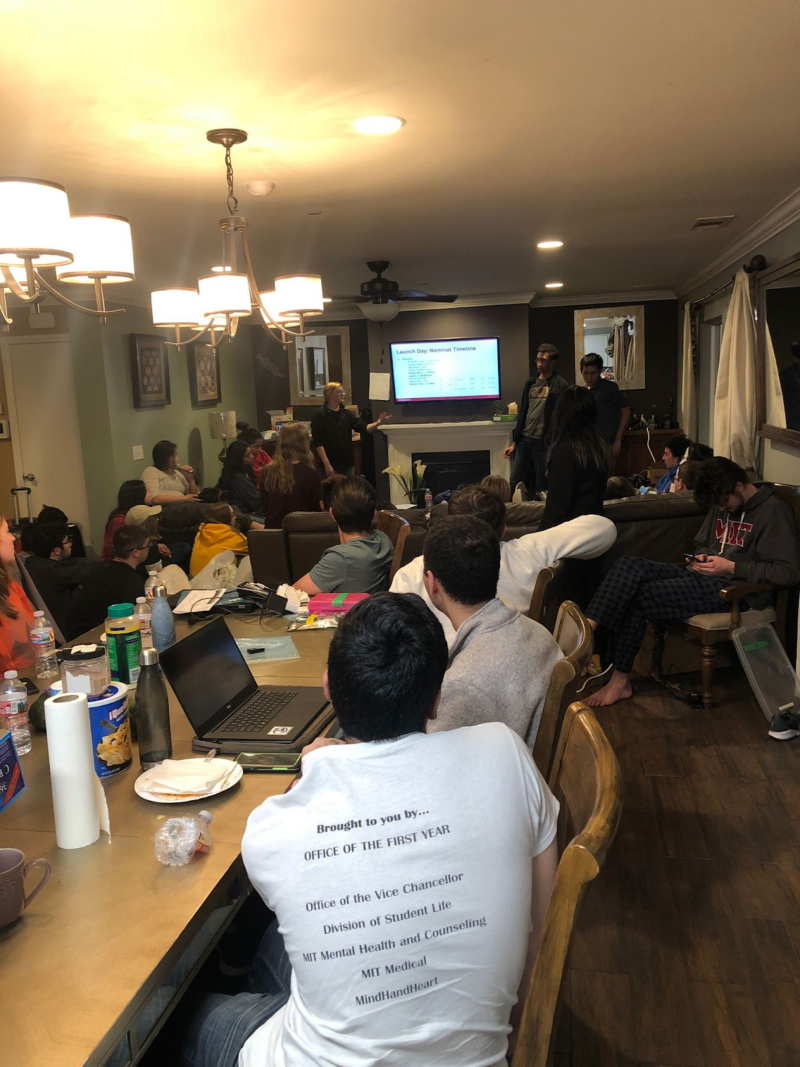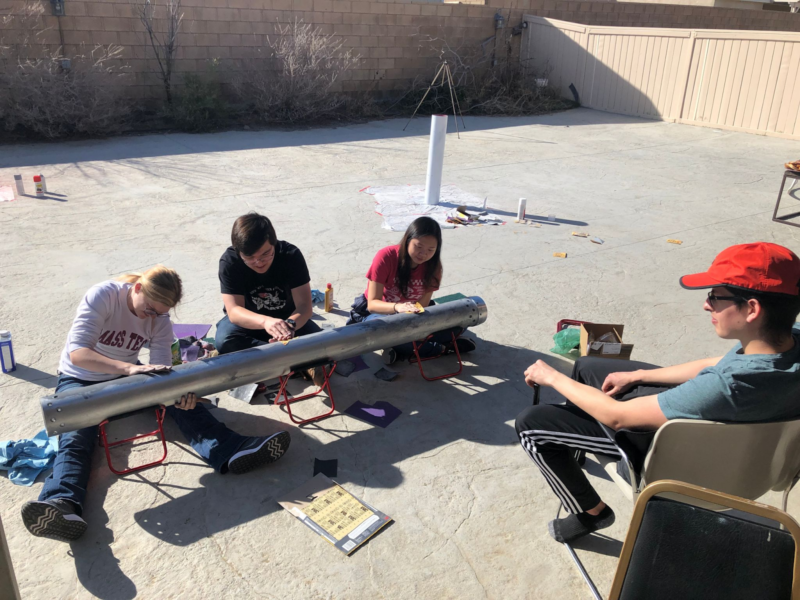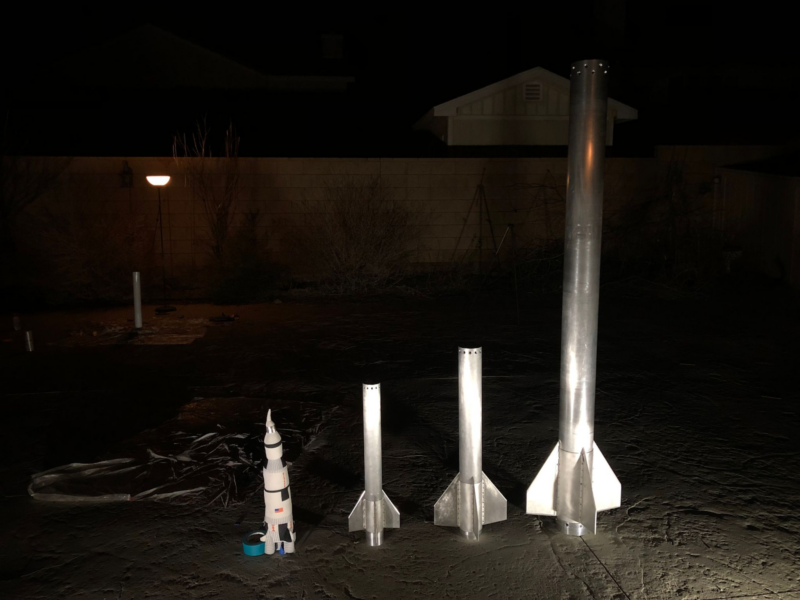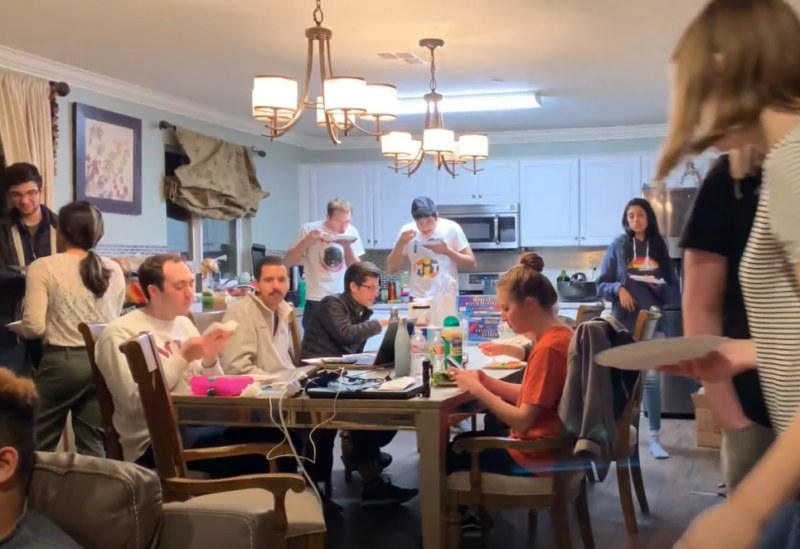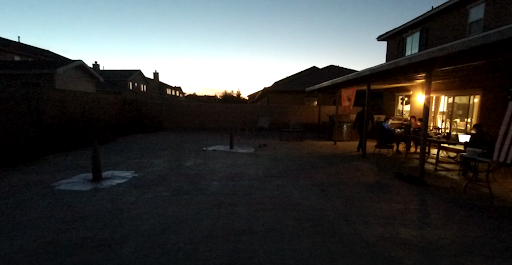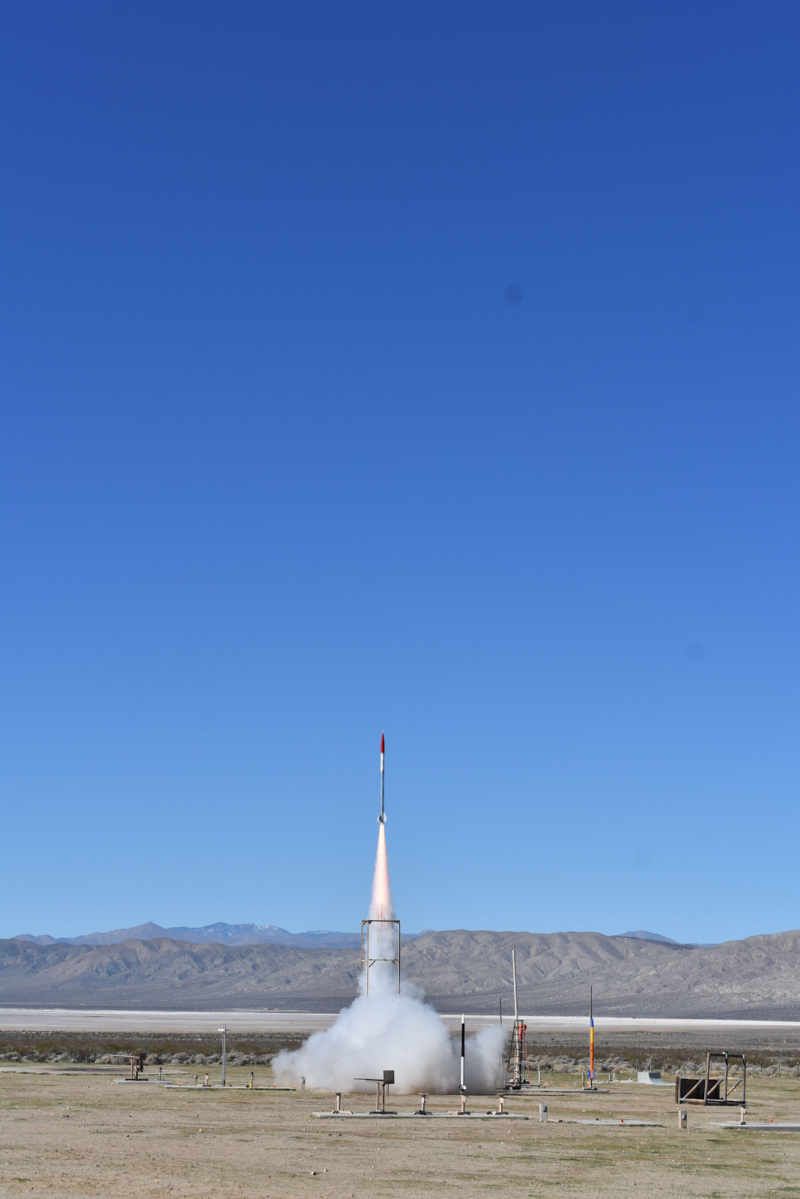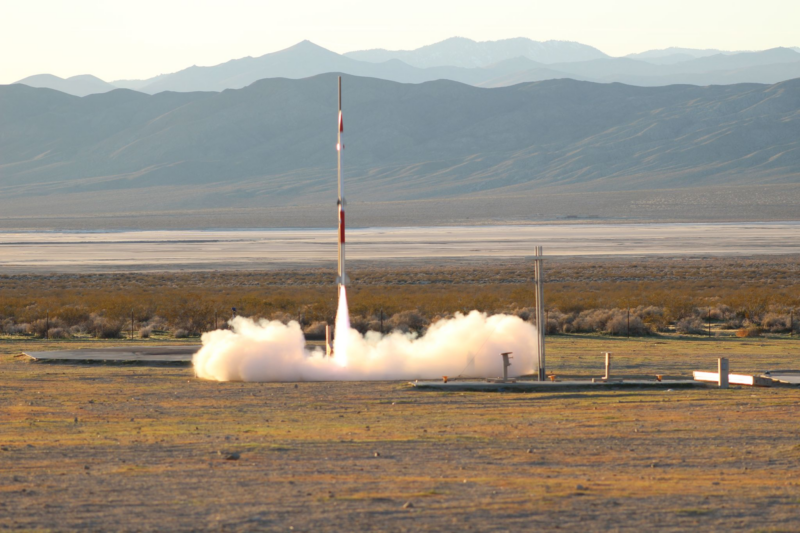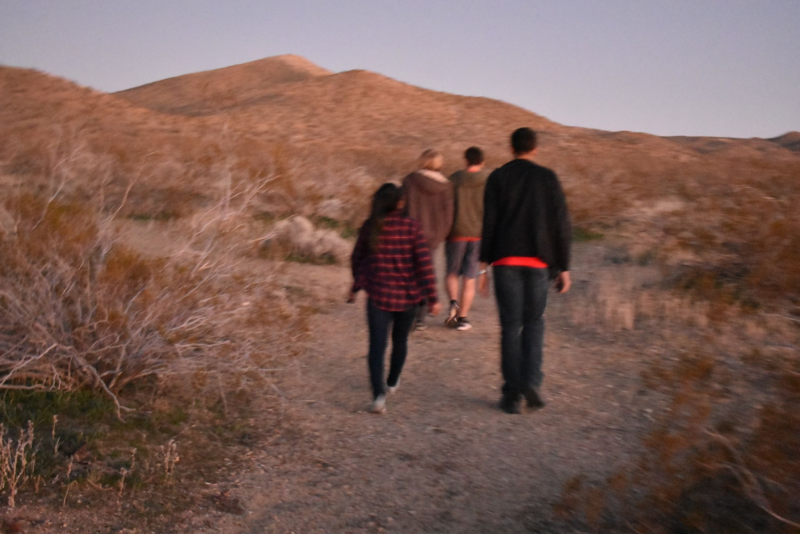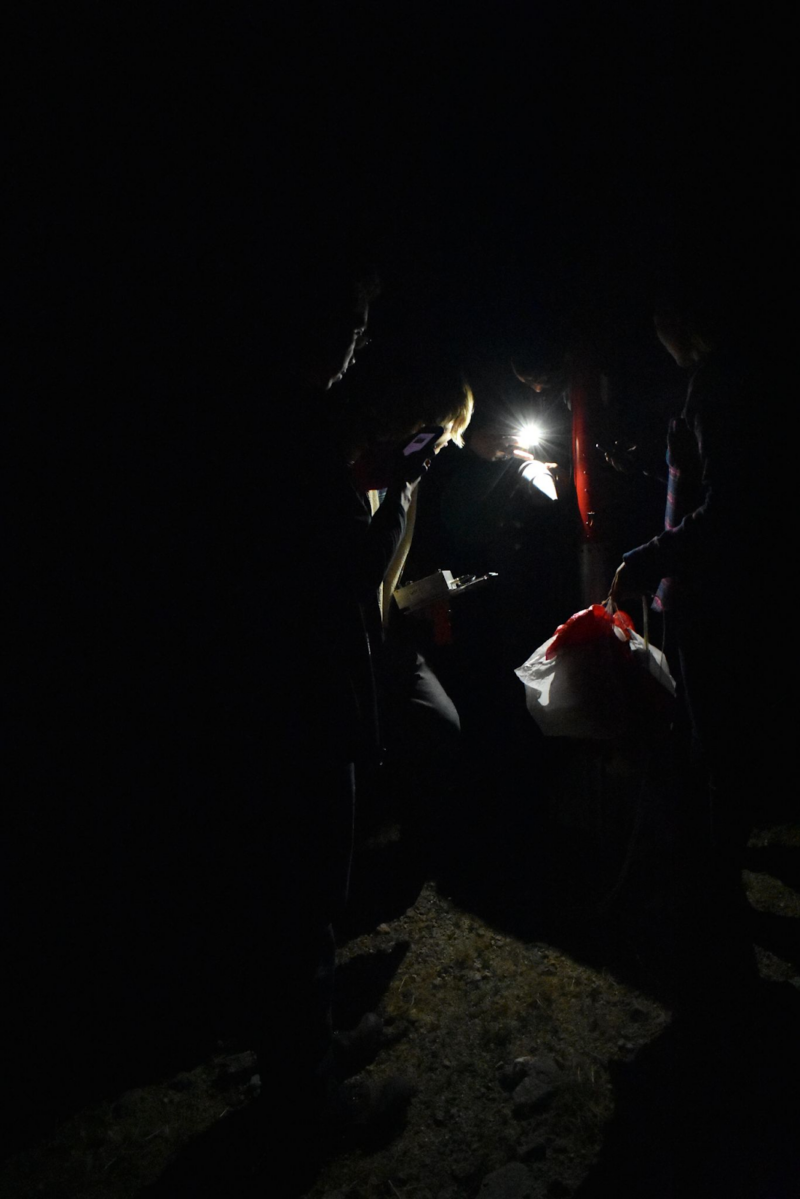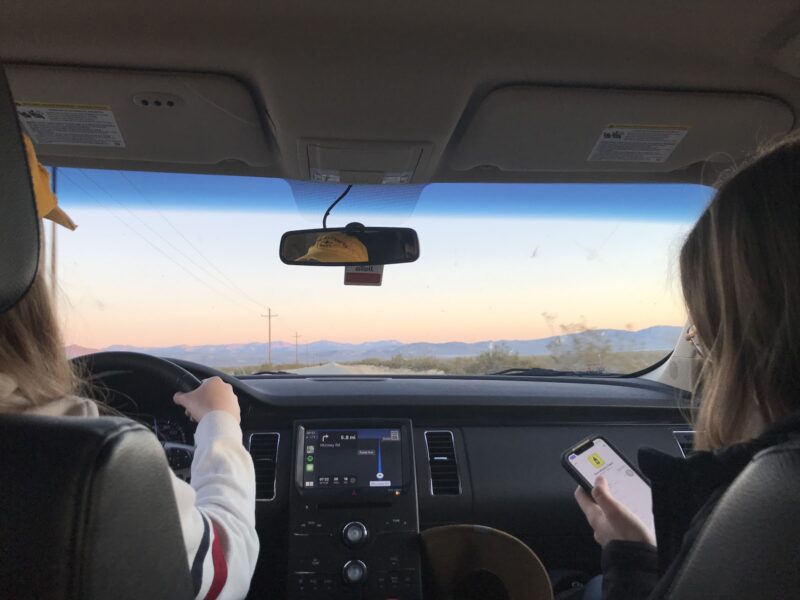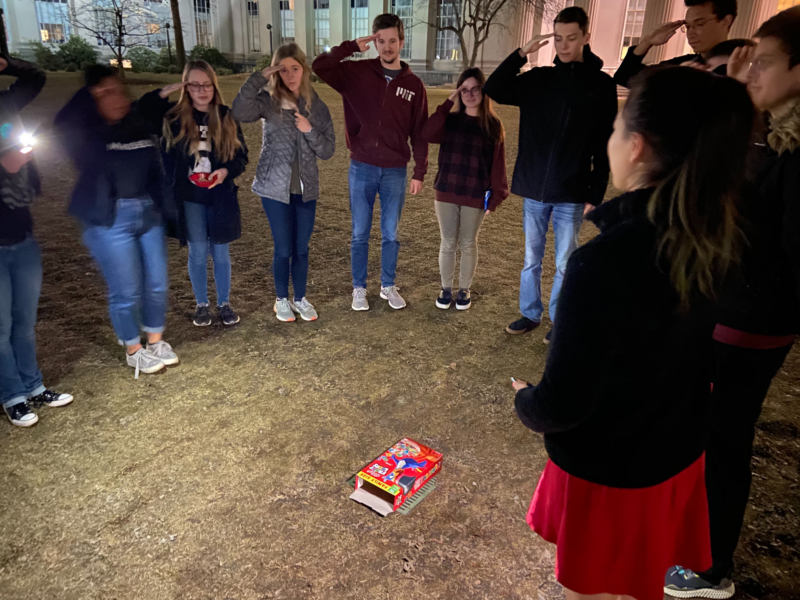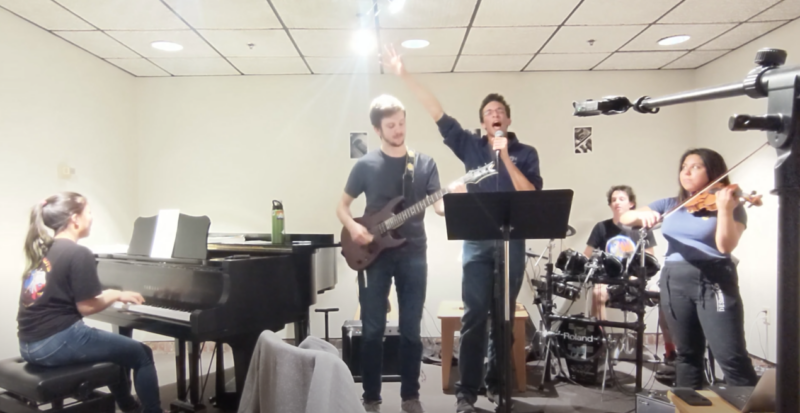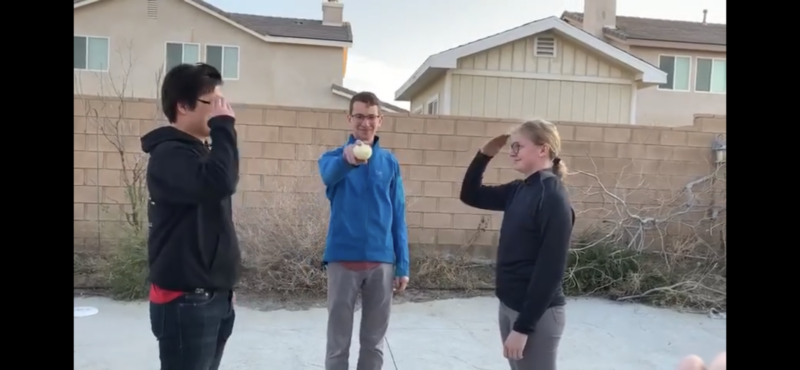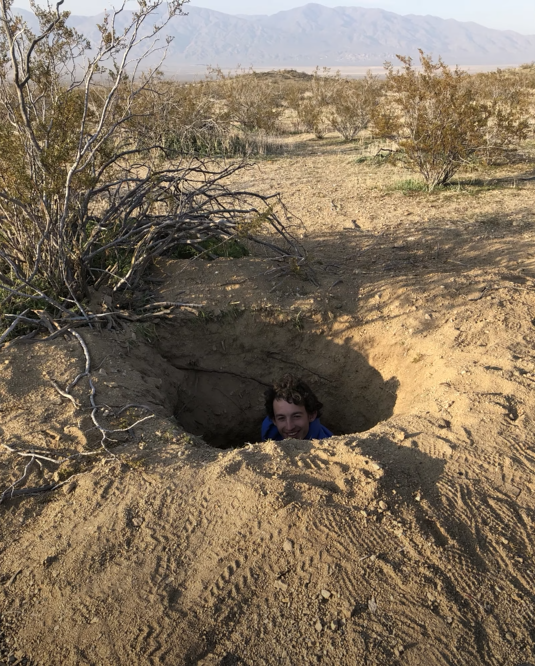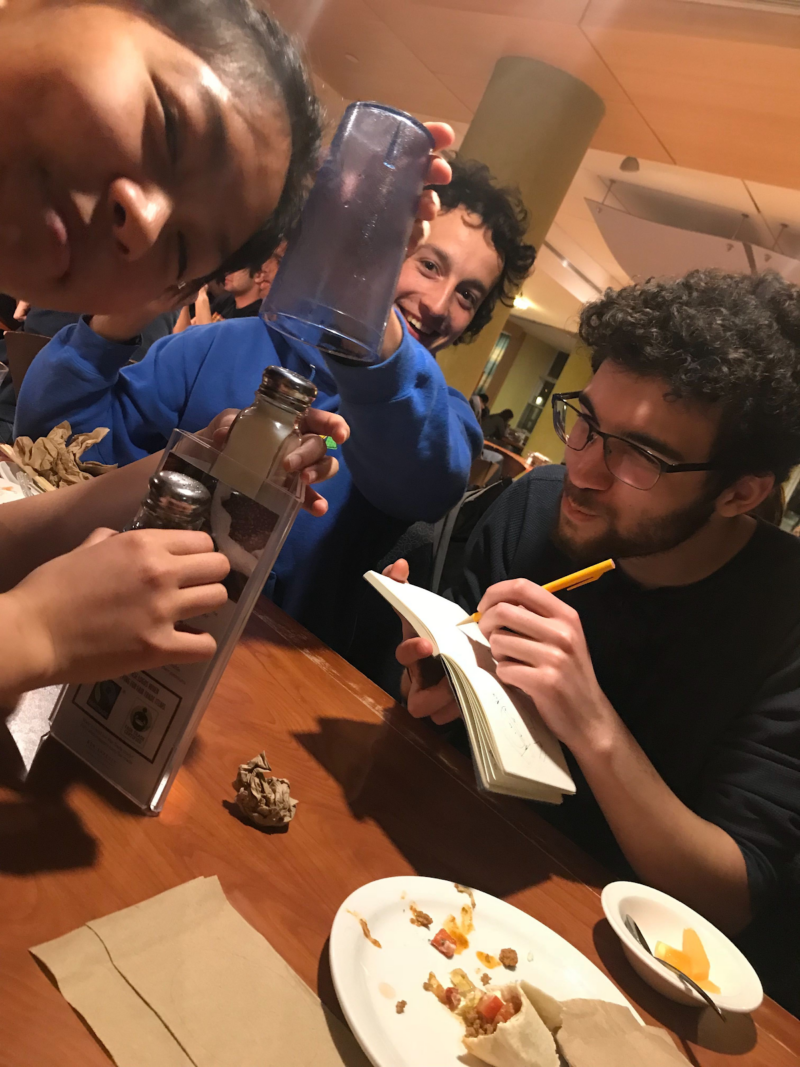
[Guest Post] 10 Reasons I Joined Rocket Team by Cami M. '23
Hi, Cami here. I’m so excited to bring to you this guest blog post by one of my best friends, Emma S. ’23. She is a huge part of rocket team and loves talking about it so I wanted to give her the platform to do so.
Because MIT has so much to offer, I think one of the most difficult lessons I’m still learning in college is how to spend my limited time and energy. In the beginning of freshman year, I was having a lot of trouble deciding what activities to drop and which ones to keep. I ended up making pugh charts comparing all the things I was involved in at MIT and Rocket Team would always find itself ranked the highest.
A good amount of content in this blogpost is based off of notes I found when looking back at those old charts. I’m hoping that I can give some insight into what Rocket Team is like and my thought process in deciding to join. So without further ado, I give you:
10 Reasons I Joined Rocket Team
1. It sounded cool.
MIT Rocket Team: a student run maker team at MIT dedicated to developing a vehicle capable of surpassing the Karman line, the boundary between Earth’s atmosphere and outer space (100 km above sea level). We are currently in the process of building the first 2-stage collegiate spaceshot rocket.
When I first heard about Rocket Team (RT), my mind was absolutely blown. Making rockets?? To go to space???? In college?????? Insane. I had to check it out.
My first introduction to RT was at CPW. One of the current members showed us the lab spaces they used and told our little tour group about RT history. In short, MIT RT started in 2014 and participated in IREC (The Intercollegiate Rocket Engineering Competition) before switching gears to their independent mission of going to space. Even cooler, I learned that all the rocket parts were manufactured by the members. In-house flight computers. Hand-sewn parachutes. Custom solid propellant motors. Hand-laid carbon fiber fin cans. All designed and made by students!!! It sounded awesome.
2. Because I could
After the tour, I just knew that I really really wanted to join. But given my lack of experience in rocketry, I didn’t know if I was actually qualified. I knew other freshman interested who had been building rockets since they were 10, or who studied aerospace intensely throughout high school, or casually built planes the summer before coming to MIT. The only experience I had was playing with those small foam rockets with little plastic accordion pumps. Oh, and I guess I had folded paper airplanes before too.
So I thought it was important to ask, “How much experience do I need to join Rocket Team?” to which I received a resounding “NONE, NONE AT ALL” from every single member within earshot. If you ask any of the current members today we will tell you the same thing. And it’s true! All I had to do was show up at the meetings and I was taught everything I needed to know. The only limit to how involved I could be was how much time and effort I was willing to put in.
3. To learn new skills
RT requires skills in so many areas. One of the hardest parts about RT was choosing a subteam to join. There are 7 main subteams. Here’s a rundown accompanied by the sounds I associate with each team:
- Propulsion (woosh) designs, manufactures, and tests the flight motors for our rockets. The team mixes custom ammonium perchlorate composite propellant in our lab, with formulas characterized through a series of small test fires. The team then performs system design using a simulation software developed by one of our team members. Following the full motor simulation, we design and manufacture motor hardware and cast our flight propellant grains. We static fire test all of our motor designs prior to flight to ensure consistency with our simulations. The team has successfully flown custom motors ranging in size up to a P9100.
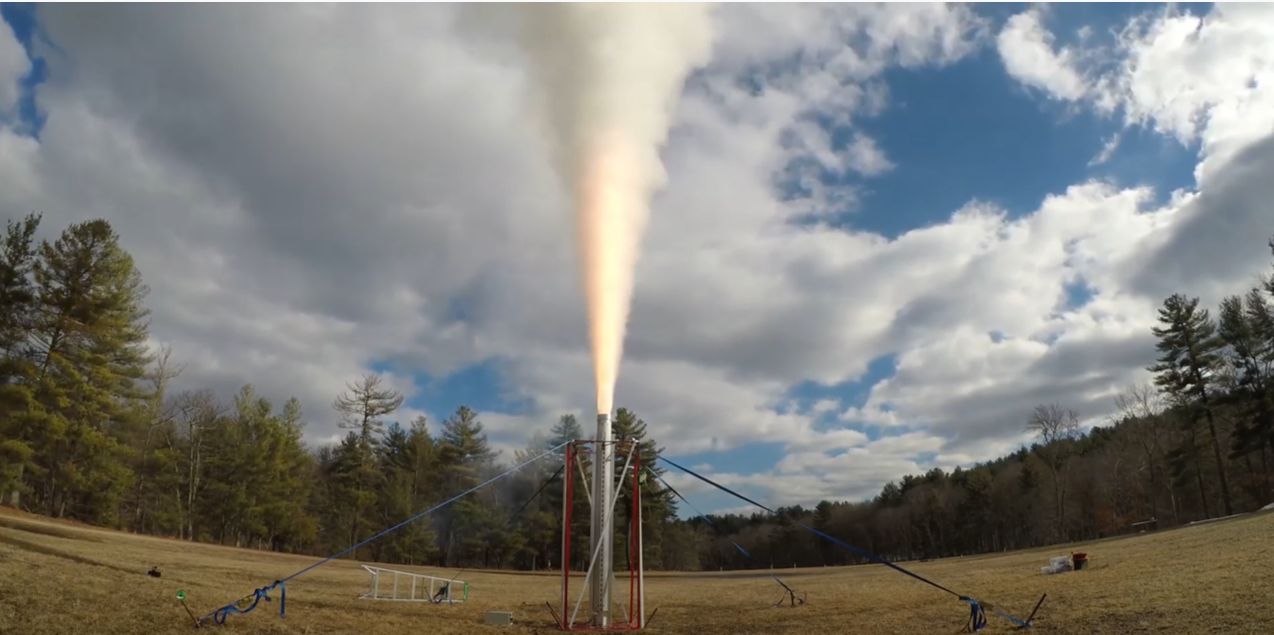
static fire test
Composites (brrrrrrr) is responsible for the design, manufacturing, and testing of our composites structures to include the fin can and nose cone of the launch vehicle. The strength of the fin can is essential to a stable flight and a successful launch. To ensure this strength, we lay up and cure our carbon fiber laminates in-house. Our nose cones are manufactured from filament wound fiberglass and precision machined steel to endure strain during flight. Together, the fin can and nose cone protect mission-vital components until they can be secured by recovery.
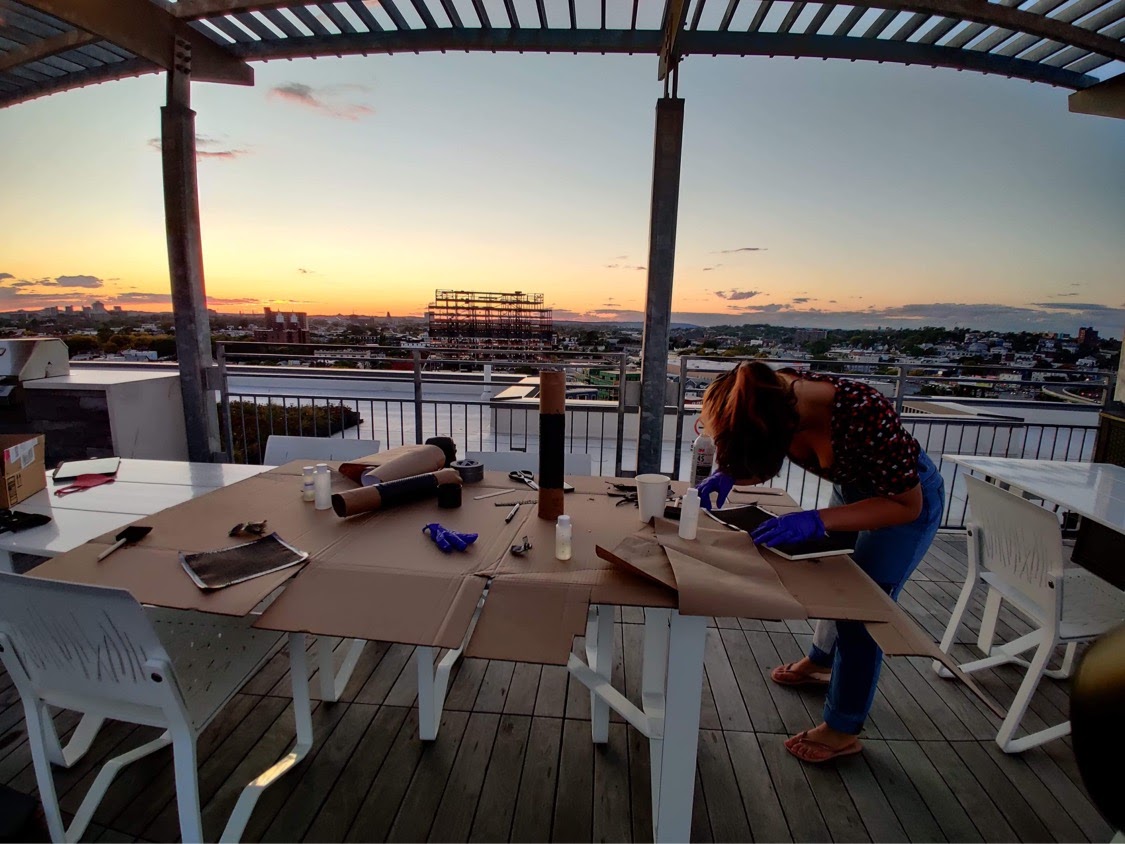
composites layup on roofdeck
- Structures (cling clang) designs and manufactures various structural components of the rocket, as well as the avionics tower. Parts like aluminum bulkheads are manufactured on CNC mills and lathes, while parts such as enclosures and panels for the avionics tower are manufactured on 3D printers and waterjets. Our components interact with all other subteams’ assemblies, making sure the whole rocket works.

machining a Structures part
- Avionics (beep boop) designs and assembles custom electronics and are currently in the process of designing a space-ready flight computer. Supporting hardware includes power management with support for on-the-pad charging and cameras, capable of recording video in Ultra HD (4K). Our multi-threaded flight software performs high-frequency sensor fusion and reports supersonic telemetry using our custom radio hardware. During the launch, they are in charge of mission control.

- Recovery (poof) designs, manufactures, and tests parachutes as well as deployment hardware for each rocket. Our custom recovery system includes hand-sewn parachutes and a high-altitude pyrotechnic separation mechanism. We thoroughly test the piston-actuated separation on the ground and in flight.
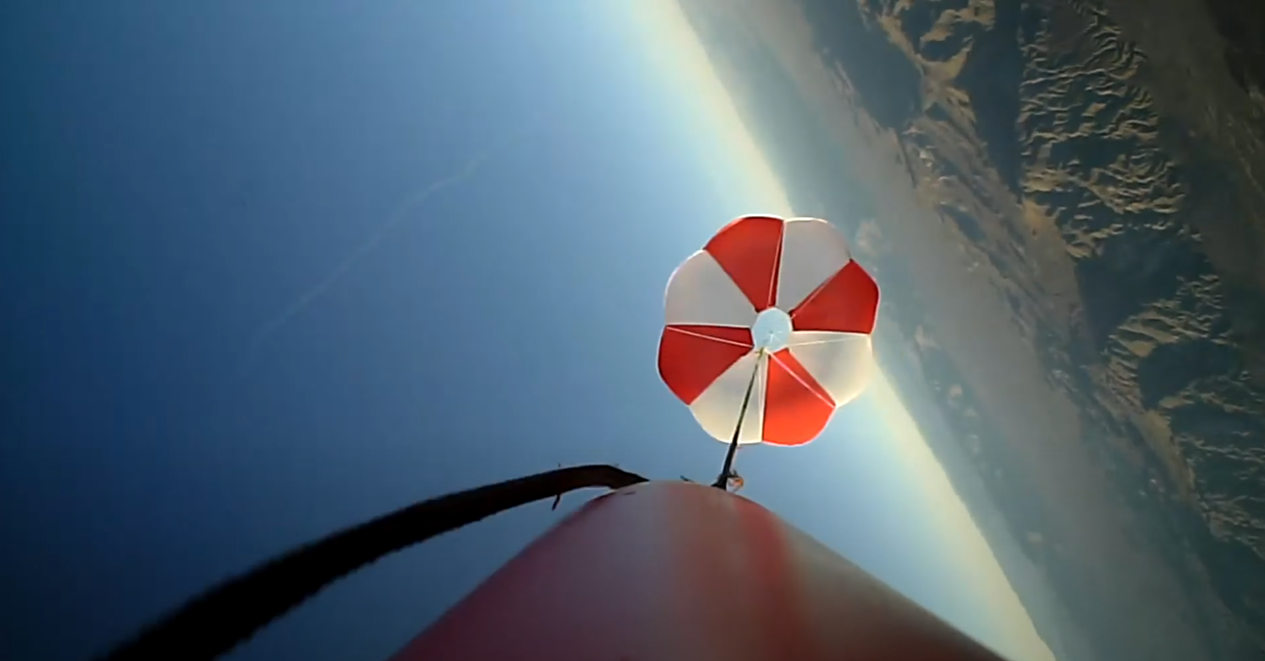
- Liquid Propulsion (psshhh) designs, manufactures, and tests liquid rocket engines. In addition to engine development, the team manufactures all test infrastructure and feed systems required for testing. All components are manufactured on campus by team members. The team has completed fabrication of a 1.6 kN heat sink Ethanol/LOX engine ready for hot-fire, and is currently working on the design of a Kerosene/LOX regeneratively cooled engine.

- Business (click clack) involves a wide range of skills and is in charge of the majority of non-technical tasks. Throughout the season, they contact sponsors for fundraising, write grants, track income and expenditures, and carry out the team’s seasonal business plan. They are essential to the team because no money = no rocket. Usually, we recommend that new members stick to one subteam, but Business is the exception!
Since I could only narrow my preferences down to 2 subteams, I decided to join both Structures and Composites. And I definitely have learned a lot since:
- Design and Analysis – I am now proficient in CAD and FEA! I became a lot more familiar with Solidworks after a whole summer of designing Structures and Composites parts.
- Simulation – On a large scale, I learned how to design a rocket and run simulations in RasAero to tweak the geometry of the fins and nose cone so that they are compatible with our flight goals.
- Manufacturing – Because of RT, I got a lot of training for different manufacturing machines and tools. I learned how to weld so I could assemble one of our testing jigs and my own classmate trained me on the lathe. I even assembled my own desktop 3D printer to make RT parts from home!
- Materials – This remote semester, Composites has been doing a lot of research in carbon fiber and I have to say, learning about the mechanics of different weaves and the various lay up techniques has been really fun. This quarantine, I was even able to put my knowledge to the test and lay up a carbon fiber notebook for myself with the composites kit that our team lead sent out.
- Testing – I got to work with an INSTRON last semester to test the durability of some fin coupons. It was really neat to be able to apply the things I had learned in 3.091 about material’s stress and strain to fin can testing.
- Course Application – Before taking 2.086, I got some experience writing code in MATLAB for thermal analysis of our nose cone tip. I even got some insight into 2.001 when our Composites lead showed me some simple bending moment hand calcs at my first layup. And now, while taking these courses, I can see the direct engineering applications of the material we learn in lecture.
- Soft Skills – Design reviews for RT subteams were very scary my first time around. Senior members on the team tear apart your designs and will ask you every single detail about your work. The week leading up to it teaches collaboration, organization, and attention to detail. Presentations require clear communication and on-the-spot problem solving. Those learned skills are less talked about but very important!
I realize that a lot of these skills are MechE oriented, but that’s because I’m a MechE and intentionally pursued projects that have MechE applications! RT has countless roles and opportunities for pretty much all majors at MIT.
4. Flexibility
Since I am a fall athlete, another one of my hesitations in joining RT was the time commitment. I knew I couldn’t go to every meeting the first semester and was worried I couldn’t join or that I would miss out on too much if I wasn’t fully involved. I was relieved to find out that a good number of current members were also in the same position where they had more commitments in one semester and could only be really active during the other.
RT is typically structured so that during the fall, the team mostly works on manufacturing and assembling the rocket designed in the spring semester. Launch is usually over winter break. That meant that during the fall, I was able to spontaneously help out with building the rocket and pick up smaller tasks that didn’t take huge blocks of time to complete. By the spring, I was familiar with how some parts were made and integrated into the rocket. Now, when designing parts, I know what to consider to make the building semester a little easier.
Team leads are also super understanding about the amount of work everyone has during those intense grind weeks, so they’ll throw in a nice balance of work sessions and social sessions. Every other week during this semester, we’ll play Among Us or CAD Pictionary to relieve stress and bond with team members.
RT is definitely a you-get-out-what-you-put-into-it’ kind of experience. This is nice because it means you don’t have to take on more than you can handle and can ease into the team at your own pace.
5. Mentorship
Not only have I learned a lot during RT training meetings, but I’ve also gotten extensive one-on-one help from older members who go out of their own way to show me how to design a certain part from scratch or debug my MATLAB code. During my remote Spring semester, one of the Seniors on the team ditched his essay to give me a whole crash course on thermodynamics, not only because I was freaking out about this design deadline I had, but also because he was so passionate about the topic. Another time an upperclassman stayed on a call with me for 3 hours to help me with my CAD and an additional 2 hours to give me advice on how to navigate MIT because he could tell I was stressed.
People on RT are willing to put hours of work into their own parts, and just as many hours into helping other teammates who could use an extra hand. And this is not exclusive to the upperclassmen. I learn just as much from my own classmates as I do from members who’ve already graduated. I truly feel like I have every tool at my disposal at MIT and that includes the knowledge of other students there. The hardest part is asking for help!
6. Responsibility
You don’t have to wait until Junior or Senior year to have a significant role on the team! I was pleasantly surprised to see myself and fellow classmates rise to executive positions only after a semester or two of RT experience. Some exec positions are actually geared towards freshmen because we want representation from all grades in our meetings and even the smaller roles are great ways to influence team practices.
And even if you aren’t in exec, there are plenty of responsibilities on each subteam to dole out. My first year, our subteam lead made me Testing RE (Responsible Engineer) and I was also put in charge of designing multiple parts for Structures and Composites. At first I thought that the positions were just a formality, but RT really values transferring knowledge to new members. I was taught how to be a self-sufficient problem solver and now, even if I’m not completely knowledgeable about a certain task, I know where to look to figure it out.
7. Professional Goals
A good amount of the hands-on engineering experience I have is from RT. Being on the team prepares you for success in industry and I can’t even count the amount of times graduated members have compared the problems in their jobs to things they’ve dealt with on RT. Not to mention, RT Design Reviews are a lot like many gruelling interviews you might face when applying to internships. I personally find myself talking a lot about RT in interviews and answering questions with anecdotes from RT.
RT also provides many opportunities to connect with people at places like Blue Origin, SpaceX, JPL, and so on. Private information sessions with companies and sponsors are available to members. And upperclassmen and RT alums are great resources who offer amazing advice on how to snag internships and sometimes will give you practice interviews to prepare. Everyone on the team supports one another and we love it when one of our own gets a position they really wanted!
8. Launch
Last IAP, one of my teammates talked me into flying out to California with the rest of RT to launch the rockets we had been working on:
- Hermes III – our high altitude, single-stage rocket with a target altitude of 80,000 ft
- Staging Demonstrator II – our two-stage rocket with 3,200 ft stage separation and 46,500 ft target altitude
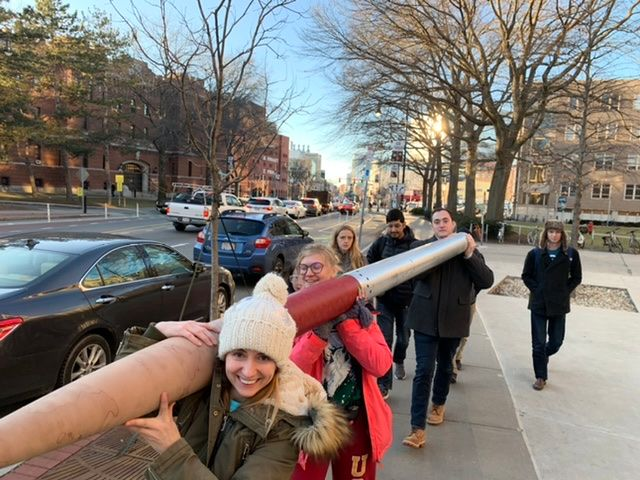
carrying Hermes III from N51 before leaving for launch
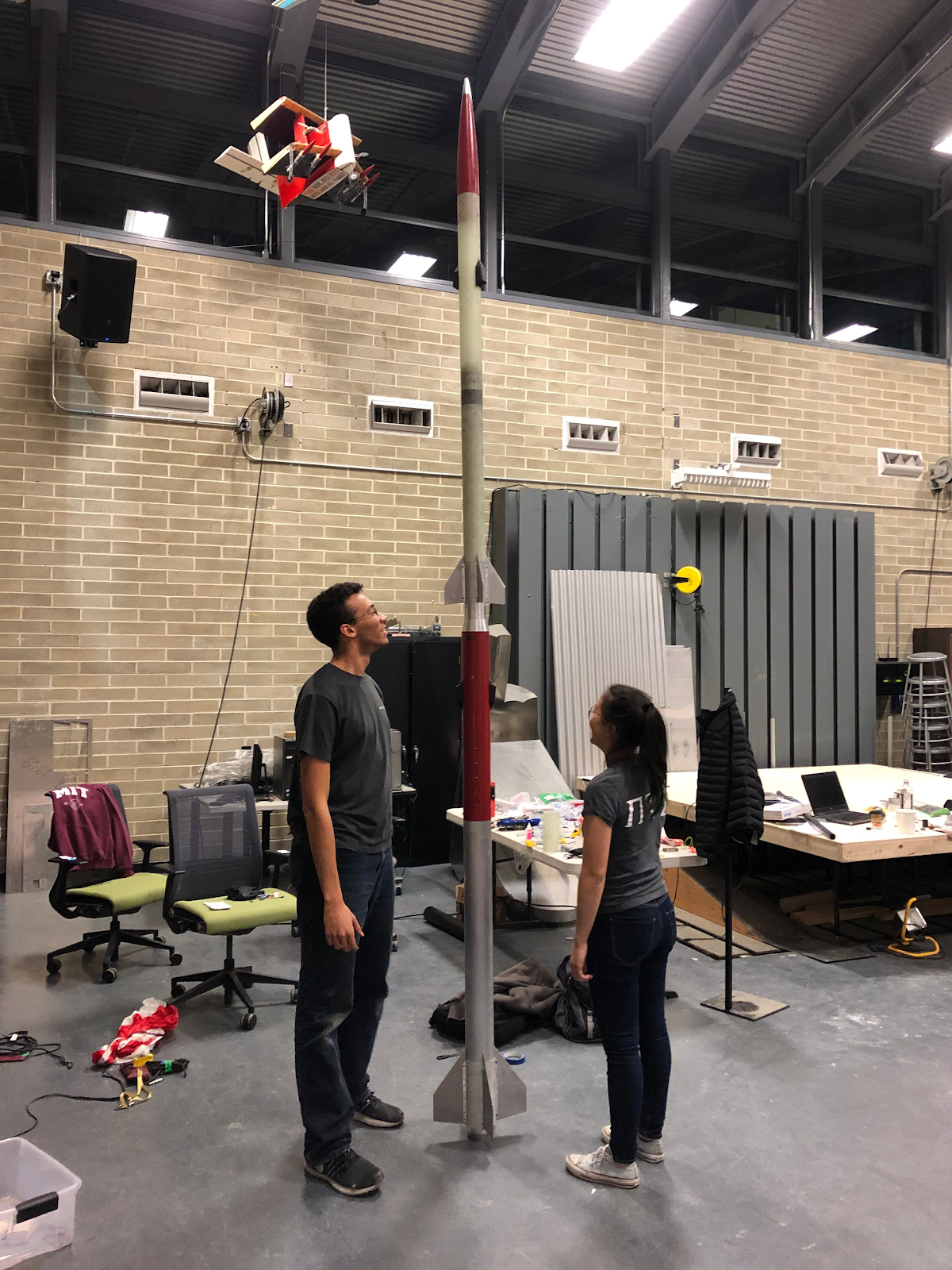
Staging Demo for scale!
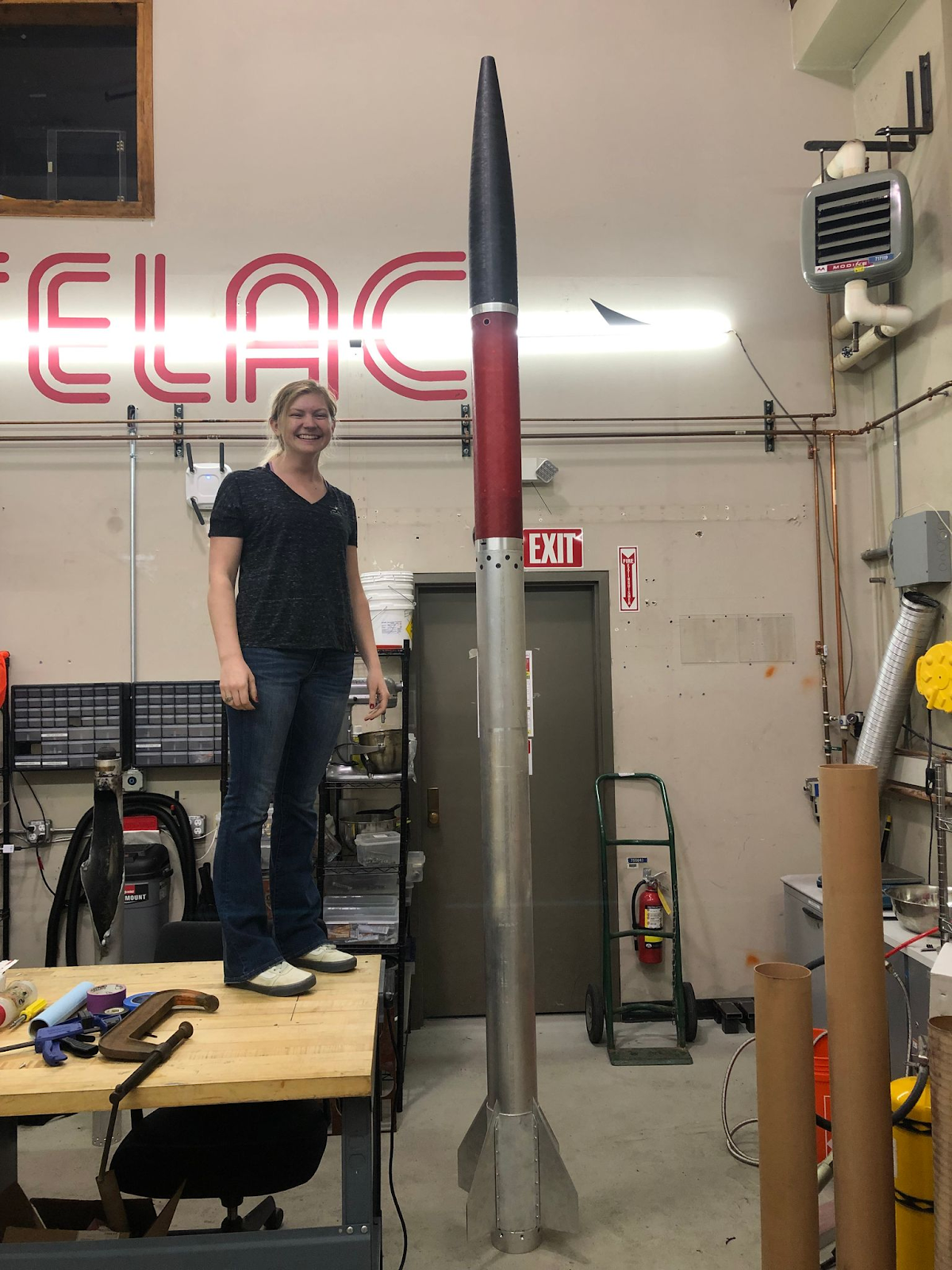
Hermes III for scale!
I was extremely hesitant to go because I felt like I hadn’t contributed as much as the older more experienced members. I was also only close with a few people on the team and the launch was a 3 day trip to the middle of the Mojave desert living with 30 other people I had never talked to. Nevertheless, I decided to go all in. I packed my bags and hopped on a plane to LAX with a dream and my cardigan.
It was probably the best decision I could have made. Nothing says team bonding like assembling rockets into the late night, waking up at 6 am to leave for the launch site (if you were lucky enough to get some sleep), spending the day watching rockets fly, and trekking for miles in the desert to recover our parts. Seeing everything come together really helped me understand why every small task I had done on the team mattered and the experience I had watching our rockets go so high can only be described as t r a n s c e n d e n t.
As for the results of launch:
- Hermes III hit a maximum speed of Mach 3.2 and reached apogee at 7,900 ft (far from our target goal) due to fin failure.
- Staging Demonstrator II was a huge success! It hit a maximum speed of Mach 2.4, reached apogee at 33,280 ft, and was fully recovered.
Both launches were personally incredible motivators for me. Watching Hermes made me want to work even harder the following season to make sure that none of the mistakes we made were repeated. And the success of Staging Demo gave me a taste of how amazing it feels to meet our goals. I came out of Launch even more dedicated to the team and prepared to put in more work.
9. It’s a lot of fun
I knew that Rocket Team would be a lot of hard work, but I never expected to have as much fun as we do. Here are some fond memories I have of in-person RT:
- Dance parties while doing fin can layups
- Singing ‘Country Roads’ at the top of our lungs while driving to FAR (Friends of Amateur Rocketry) at 7am.
- Boba and chill events in the Unified Lounge.
- Befriending Staples or Home Depot workers while making spontaneous midnight trips for extra launch materials.
- The occasional jam sesh in Simmon’s music room and after considering if RT should actually be a band.
- Grabbing food at Next after a Structures meeting and continuing to model our parts with the available utensils.
- The funeral held for Tim the Beaver, our valiant Staging Demo astronaut (followed by snacks and a showing of ‘Top Gun’).
- Post-launch barbeque and making a video cover of Gangnam Style while Seniors feed popcorn to the Freshmen from the roof.
… and some fun things we still do remotely:
- Watching (or just waiting for) live rocket launches as a team over Zoom.
- Every now and then, outfit contests at RT all-hands meetings.
- Playing Among Us and immediately demolishing any trust built from other team bonding exercises.
- Spending hours on Zoom even after meetings have ended to just talk about life with whoever was still on the call.
- Remote coffee chats with new members. I love meeting new teammates and hearing about what they do outside of RT!
- Keeping the #memes channel alive in Slack. I can always count on my daily RT meme.
- Homemade cookies from the Edgerton Center delivered right to my doorstep.
- Socially distanced park lunches with RT friends near campus.
10. The people
I love being able to say that the people I was extremely intimidated by when I first joined RT are now not only my dependable teammates, but also my close friends. I have learned so much from every person I’ve encountered on RT and am constantly impressed and empowered by my teammates. At the same time, I feel comfortable making stupid jokes and talking about completely unnecessary things with them. And I am also shocked by the amount of people on the team with whom I feel extremely comfortable talking about personal matters. I have made a lot of really great friends on the team and I even plan to pod with some of them this upcoming semester!
The connections I’ve made even this semester within the team are unforgettable and the fact that RT has survived and even excelled during this remote semester just goes to show how strong the community and its members are. I’m so thankful to be a part of such a motivated and kind group of people and if any of you are reading this now, I miss you and I can’t wait to give you all hugs once it’s safe to again!
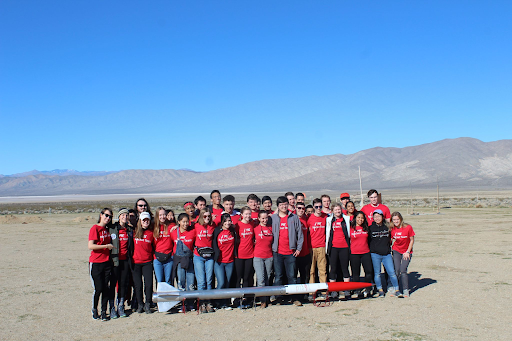
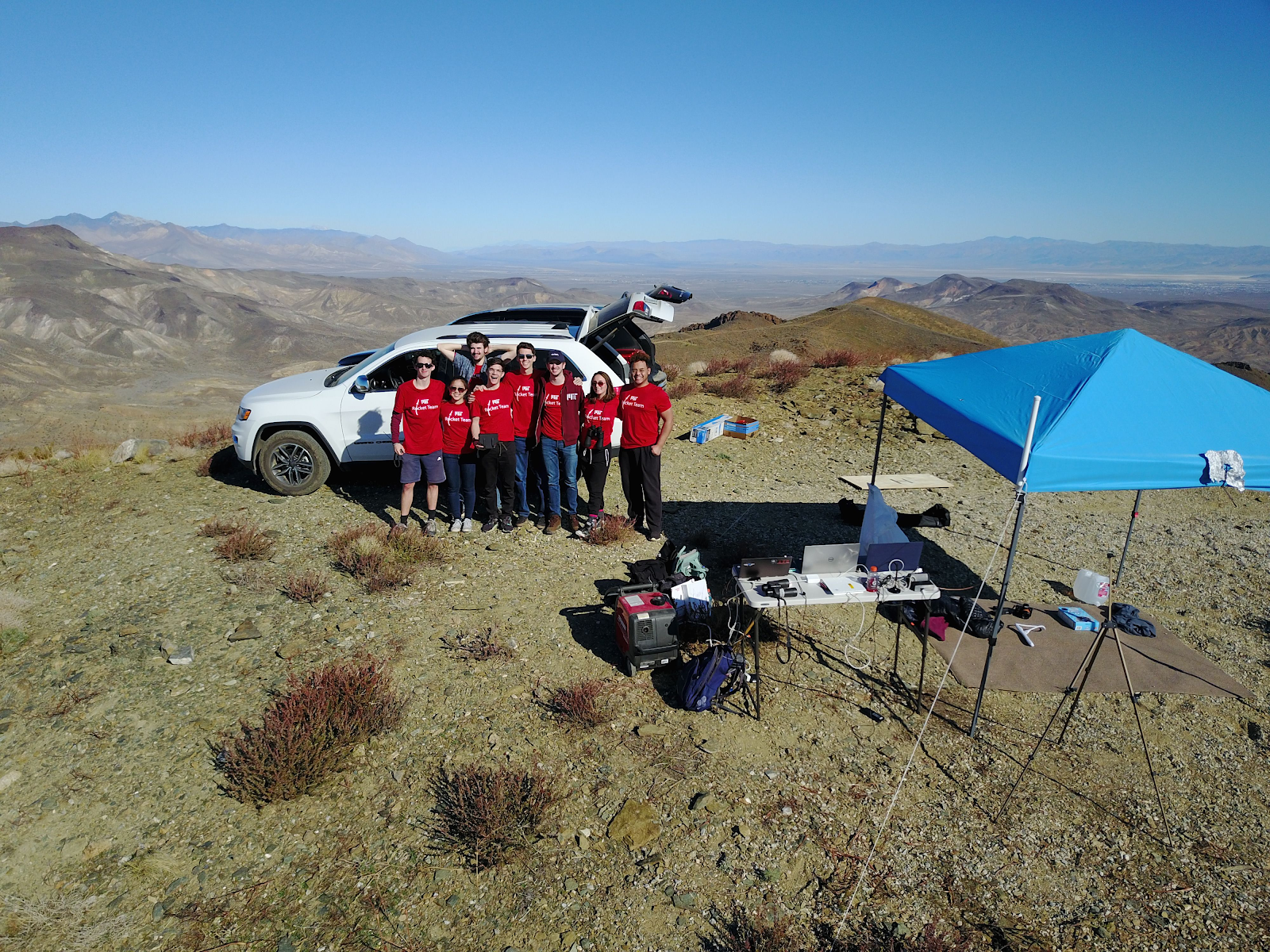
I do not mean to say that Rocket Team is the perfect club as it is not without its stressful time-sensitive work sessions and often scary design reviews. But I do think that it represents a lot of what MIT has to offer and it has personally helped me grow as an engineer and teammate.
These are some of the concrete reasons why I joined but if I’m being honest, my decision making was not this regimented. I only registered that Rocket Team was a priority when I realized I was consistently choosing to spend my time with Rocket Team. There are a lot of factors that go into deciding what classes to take, what major to study, and what clubs to join. But at the end of the day, you should do what you think is interesting and what you find yourself naturally gravitating towards. Why waste your time with anything else?
